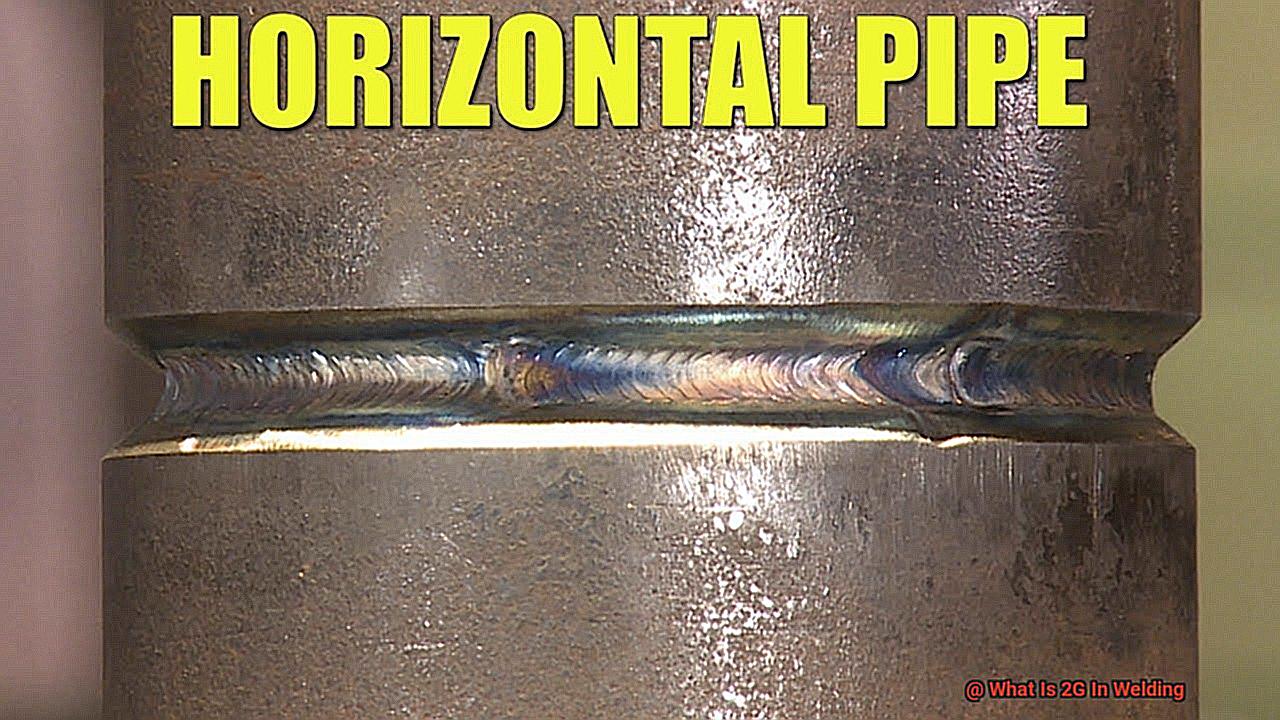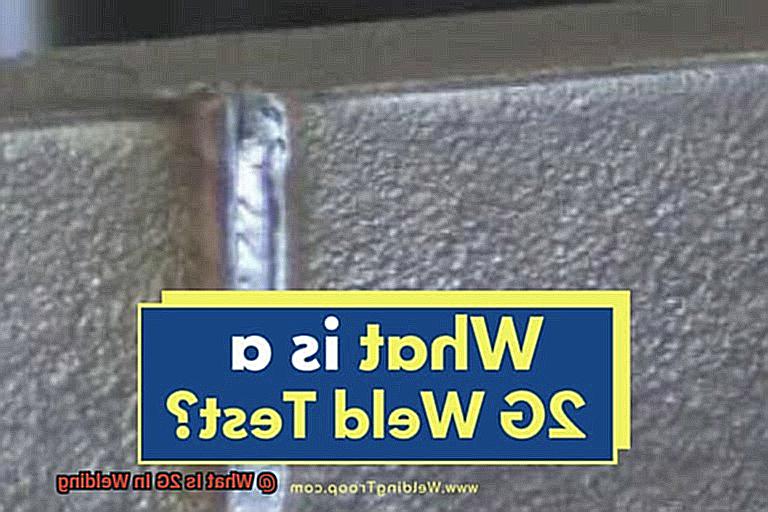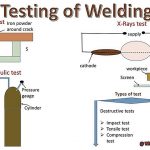We are excited to present our blog post on the intriguing topic of 2G welding. Whether you’re an experienced welder seeking to broaden your skills or a curious individual with an interest in welding, this post is tailored just for you.
2G welding, also referred to as horizontal groove welding, is a widely utilized technique for connecting two metal pieces in a horizontal position. Though it may seem straightforward, there are various elements that contribute to achieving a robust and precise 2G weld.
So, don your safety equipment and let’s explore the complexities of 2G welding together.
What is 2G Welding Position
Contents
Welding may seem like a simple process, but there is much more to it than meets the eye. It is a crucial aspect of construction, playing a vital role in joining metal parts together to create sturdy structures like buildings and bridges. However, did you know that there are various positions for welding? One of the most widely used and significant positions is the 2G welding position. In this post, we will delve into the intricacies of this position and its importance in the welding industry.
But first, let us understand what exactly is meant by 2G welding position. The term is derived from the American Welding Society (AWS) welding code and refers to a specific groove position. The “G” stands for “groove,” indicating that the weld is made in a gap or groove between two metal parts. This particular position is also known as the horizontal groove position.
Now, let us break down the numbers and letters used in this term to gain a better understanding. The number “2” indicates that the weld is performed on the second side of a joint, while “G” represents the groove position. Therefore, 2G signifies that the weld is made on the second side of a joint in a groove position.
So why is 2G welding position so significant in the welding industry? Firstly, it is commonly used when welding structural steel in buildings, bridges, and other structures. This position allows for efficient and high-quality welds to be made on thick plates and pipes, ensuring sturdy and durable constructions. Additionally, it is suitable for welding joints that are in a horizontal direction, such as beams or columns in construction projects.
Moreover, 2G welding position is also preferred when performing backhand welding techniques, where the welder moves away from the completed weld while performing it.
Where Do You Use 2G Welding
An essential technique to master is 2G welding. But where exactly is this position utilized? Let’s delve into the world of welding and explore the diverse applications of 2G welding.
Firstly, let’s comprehend the concept of 2G welding. In this position, the axis of the weld is horizontal while the workpiece remains vertical. It is ideal for grooves, butt welds, and thin sheet metal and plates. The torch is held at a 90-degree angle to the workpiece and welding is done from the side. This position offers stability and precision when working on flat or horizontal surfaces.

So where can this powerful welding technique be implemented? Below are some common applications of 2G welding:
- Construction Industry: 2G welding is widely used in the construction industry for building structures such as buildings, bridges, and pipelines. It is particularly useful for welding joints in steel girders or beams, providing a robust and secure connection.
- Automotive Industry: Another prevalent application of 2G welding is in the automotive industry. This technique is perfect for welding car frames, exhaust systems, and other components that require a high level of accuracy and precision.
- Shipbuilding: In shipbuilding, 2G welding is utilized to join steel plates together to create the hull of a ship. This requires precise and sturdy welds to withstand the constant pressure and movement of the ocean.
- Manufacturing Industry: Many manufacturing processes involve welding, and 2G welding is no exception. This position is commonly used in fabricating metal parts for machinery, equipment, and appliances.
- Repair Work: When it comes to repairing metal structures or equipment, 2G welding can be a lifesaver. Its ability to produce strong and accurate welds makes it perfect for fixing cracks or breaks in various metal objects.
Characteristics Of The 2G Welding Position
Today, we unravel the complexities of the 2G welding position, also known as the G welding position, a versatile technique widely used in pipe welding.
The 2G welding position is a horizontal method used to weld grooves, with the weld axis positioned horizontally and facing the vertical plane. It is an ideal choice for welding on flat or horizontal surfaces, such as plates and thin sheet metal. Moreover, it is also commonly employed in G pipe welding, making it a crucial skill for any welder to possess.
One of the pivotal characteristics of the 2G welding position is its stability. The horizontal orientation of the weld axis allows gravity to play its role in keeping the molten metal in place, resulting in effortless control and precise welds. This stability proves to be crucial when working on flat or horizontal surfaces, where even the slightest movement can affect the weld’s quality.
Another advantage of the 2G welding position is its ability to evenly distribute weld metal. This feature comes in handy while welding pipes, ensuring a consistent and robust bond between two pieces of metal. It also results in a visually appealing and smooth weld appearance.
When working with delicate materials like thin sheet metal or plates, the 2G welding position offers enhanced control and precision due to its horizontal alignment. This allows for better manipulation of the heat source and reduces the risk of burn-through or distortion of the metal.
However, mastering the G pipe welding position requires exceptional skills as it involves performing horizontal welds on a vertical surface. This demands a steady hand and impeccable precision to achieve sturdy and durable welds. Although considered more challenging than other positions, with regular practice, it can be mastered.
In conclusion, mastering the 2G welding position opens doors to endless possibilities for welders.
What is the Qualification Range for 2G
This specialized horizontal welding technique, also known as “groove welding,” is used to create strong and stable connections between two flat or horizontal surfaces. In this comprehensive guide, we will delve into the qualification range for the 2G position and equip you with all the necessary information to become a proficient 2G welder.
Qualification Requirements:
To attain certification as a 2G welder, one must successfully pass a welding performance qualification test in accordance with the American Welding Society (AWS) D1.1 structural welding code. The test is divided into three parts: visual inspection, destructive testing, and non-destructive testing. The welding operator must demonstrate their skills by creating both groove and fillet welds in the 2G position on a plate with a thickness of at least ¼ inch.
The Qualification Range:
Upon successfully passing the 2G qualification test, the welder is qualified to perform welding tasks in various positions. As per AWS guidelines, obtaining 2G certification also qualifies the welder for pipe or tubing with diameters larger than 24 inches, as well as plate welding in any position. Additionally, passing the test also grants qualification for fillet welding in both flat (F) and horizontal (H) positions.
The Advantages of Becoming a Certified 2G Welder:
Achieving certification in 2G welding opens up numerous job opportunities that require horizontal welding on flat surfaces. This includes projects such as bridge construction, shipbuilding, and building construction. Furthermore, it also qualifies for other positions such as vertical-up (3G) and overhead (4G), making it an incredibly versatile skill to possess in the welding industry.
In conclusion, mastering the 2G welding position not only demands exceptional skills but also presents countless career prospects and lays a solid foundation for further welding qualifications.
Pros
As a master of the welding craft, you are well aware of the importance of being proficient in various welding positions for a successful and lucrative career. And when it comes to versatility and advantages, 2G welding stands out as a position worth exploring.
But what exactly is 2G welding? The “G” denotes “groove,” and this position involves welding in a horizontal groove or joint. However, what sets 2G apart from other positions? Let’s delve into the benefits of utilizing this position in welding.
Enhanced control and precision
One of the most significant advantages of 2G welding is the increased control and precision it offers. The horizontal position allows for better manipulation of the hand and torch, resulting in smoother and more accurate welds. This is particularly beneficial for novice welders or those struggling with other positions.
Versatility in techniques and projects
Another notable aspect of 2G welding is its versatility. It can be applied to various welding techniques, including MIG, TIG, and stick welding, making it a valuable skill for different types of projects. Additionally, the horizontal position provides better visibility and maneuverability, making it easier to access hard-to-reach areas.
Heightened efficiency and productivity
Efficiency is another major advantage of 2G welding. This position requires less effort and energy compared to others, resulting in increased productivity and reduced fatigue for the welder. This can have a positive impact on both the welder and the overall project.
Sturdier welds
For thicker materials, 2G welding is the go-to position. It offers deeper penetration, resulting in stronger and more durable welds. This makes it a preferred choice for structural or heavy-duty projects.
Enhanced safety
Last but not least, 2G welding boasts safety benefits as well.
Cons
Exploring the Potential of Horizontal Welding: Advantages and Drawbacks You Should Know
Mastering various welding techniques can elevate your career in many industries. One such technique is 2G welding, also known as horizontal welding. This method has numerous benefits, but like any other, it also has its drawbacks. As an expert in welding, I am here to shed light on the potential cons of using 2G welding.
Safety Concerns:
First and foremost, safety should always be a top priority when it comes to welding. 2G welding involves working in a horizontal position, which can increase the risk of exposure to fumes and radiation. These hazards can be detrimental to the welder’s health if proper precautions are not taken. It is crucial to wear appropriate protective gear and work in a well-ventilated area to avoid any potential risks.
Limited Versatility:
While 2G welding offers enhanced control and productivity, it may not be suitable for all types of welding. This technique is primarily used for flat surfaces and may not be as effective for welding in tight or confined spaces or on vertical surfaces. Therefore, it is essential to assess the welding requirements beforehand to determine if 2G welding is the optimal technique for the job.
Higher Costs:
Another drawback of 2G welding is the potential for higher costs. As this technique requires working in a horizontal position, it may require additional equipment and specialized training. This can increase the overall cost of the welding process. However, with proper training and equipment, 2G welding can produce high-quality welds that are worth the investment.
In conclusion, while 2G welding offers many benefits such as increased control and productivity, it is essential to be aware of its potential drawbacks. Safety concerns, limited versatility, and higher costs are some factors that should be considered before using this technique.
2G vs 2F Welding Positions
The art of welding is a meticulous craft that demands precision, technique, and a deep understanding of various welding orientations. Among the commonly used welding positions are 2G and 2F, each with its own unique merits and challenges. As a seasoned welder, I have honed my skills in working with both positions and can confidently illuminate their differences.
Triangular Configuration vs. Groove Connection
The primary divergence between 2G and 2F welding positions lies in the geometry of the welded joint. In 2G welding, the weld takes on a triangular shape, forming a fillet connection. Conversely, 2F welding entails creating a groove connection, where the weld is applied between two surfaces meeting at right angles.
Vertical vs. Horizontal Orientation
Another crucial contrast between these two orientations is the direction of the weld. In 2G welding, the face of the weld is in a vertical orientation, making it ideal for joining pipes or cylindrical objects. On the other hand, 2F welding involves welding on a horizontal plane, rendering it suitable for connecting flat surfaces such as plates or sheets.
Challenges Encountered in 2G Welding
While it may appear that 2G welding presents fewer complexities than 2F welding due to its triangular shape, it does pose certain challenges. One of the primary difficulties encountered in this orientation is potential puddle sag. Due to the force of gravity, the molten metal can droop and cause an uneven weld, necessitating additional effort to maintain control over the puddle.
Conclusion
In conclusion, 2G welding is a vital technique in the field of welding, offering a wide range of advantages such as improved control and adaptability. It has become an integral part of various industries, including construction, automotive, and manufacturing. However, it is crucial to be aware of its potential drawbacks, such as safety concerns and limited versatility.
Furthermore, having a thorough understanding of the differences between 2G and 2F welding positions can help welders make well-informed decisions on which orientation to use for their specific projects. Each orientation has its own unique strengths and challenges, making them suitable for different types of welding tasks.
Overall, mastering the art of 2G welding opens doors to endless possibilities for welders and can greatly enhance their skills and career prospects.





